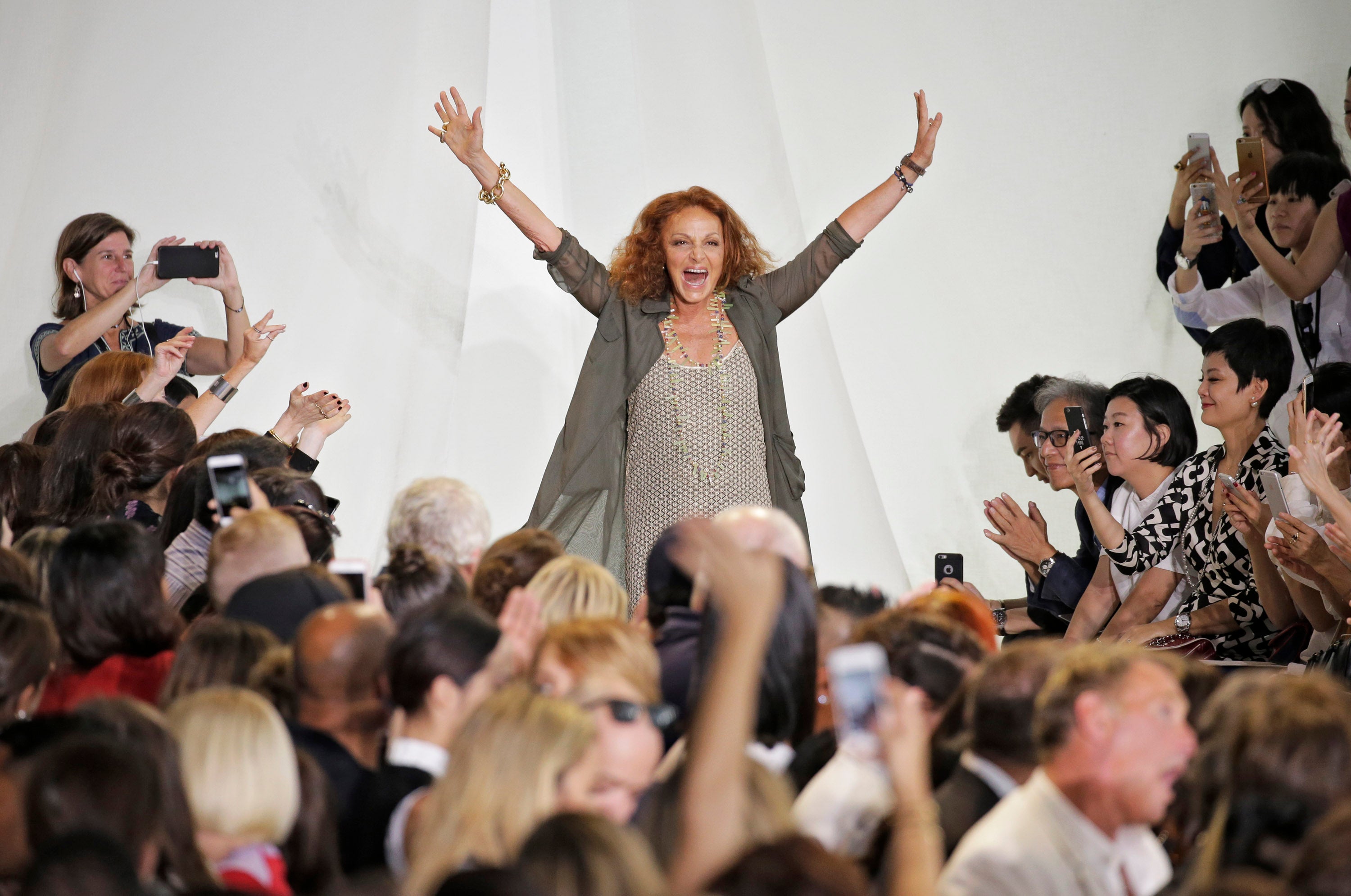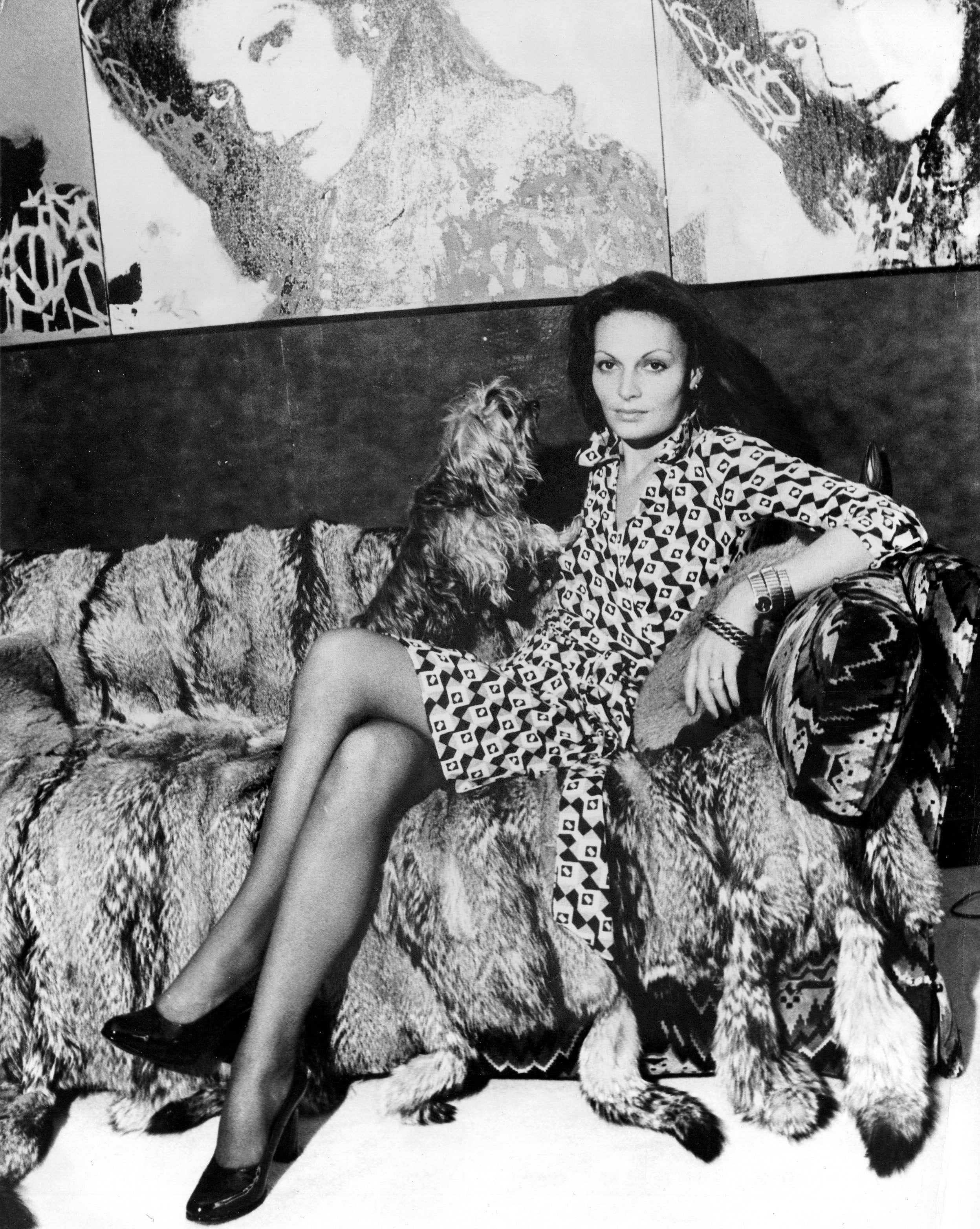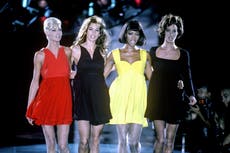The Independent's journalism is supported by our readers. When you purchase through links on our site, we may earn commission.
Diane von Furstenberg: ‘I created the dress that is still around after almost 50 years. That’s sustainable fashion’
The legendary fashion designer speaks to Olivia Petter about feminism, owning it in the workplace, and why people are still wearing her iconic wrap dresses


The age-old myth of “having it all” might be more harmful than it is helpful, but that’s not to say it isn’t possible to achieve. At least, that’s what Diane von Furstenberg thinks. “Women are so used to balance, that’s what the feminine energy is about,” she tells me over the phone from her country home in Connecticut, where she’s spent most of the pandemic. We’re discussing motherhood and the art of juggling that alongside a fledgeling career, something Von Furstenberg, who credits her career success to becoming a mother at the age of 22, has done with aplomb. “That’s a part of who we are and what makes us special,” she says. “Balancing things is part of our DNA. You think men could have periods every month?”
It’s not hard to see why the 74-year-old Belgian designer is one of the most revered figures in the fashion industry. Acerbic, warm, and phenomenally accomplished, Von Furstenberg – or “DVF”, as she’s affectionately called – is best known for her namesake label founded in 1972 off the back of what would quickly become one of the most recognisable designs in fashion history: the wrap dress.
The simple design – a classic wardrobe staple for many – is formed by wrapping one piece of fabric across the other, and knotting the ties that wrap around the back at the waist. The result is a V-neck dress that fits true to your size. Thanks to the way that the dress flatters the female body, regardless of dress size, it has since become an iconic garment, one that became synonymous with female liberation.
“It looks like nothing,” DVF says of her famous dress. “When I first started trying to sell it, people told me it was just a little piece of fabric. But when you put it on, the way you tie it and feel it, it empowers you. I like to think that I make clothes that are a woman’s best friend for life; I always put that before the fashion, that’s what I’m all about.” This is a USP that has stood the test of time, with at least one version of DVF’s original wrap dress design available in almost every high street shop today, more than 50 years since its advent.
What started with a dress has resulted in a career that has extended beyond the bounds of fashion. A dedicated philanthropist and feminist, who came to prominence alongside the rise of the women’s liberation movement in the 1970s, Furstenberg has long advocated for female achievement, and each year awards $50,000 (£36,000) to five female-run non-profit organisations to support their work as part of the DVF Awards.
In 2020, Christine Lagarde, president of the European Central Bank, awarded her a Chevalier de la Legion D’Honneur in Paris for her consistent support of female leadership, and for raising more than $100m (£80m) for the Statue of Liberty Museum in New York. She has even had a stab at reality TV, having appeared on The Hills spin-off, The City, in 2008, and then fronting her own show, House of DVF, in 2014.

Among her impressive achievements, Furstenberg added author to her CV in 1976 with her first book, Diane Von Furstenberg’s Book of Beauty: How to Become a More Attractive, Confident, and Sensual Woman, and has since published 10 more books on everything from fashion to interior design. This month, her latest, Own It: The Secret to Life, in which DVF shares her manifesto for empowerment in the workplace and beyond, is released.
The book takes us through an A to Z of words chosen by DVF with definitions explaining how they relate to her career and personal growth. The book offers thoughtful observations on subjects like fame, money, and what it means to be a woman today, with words included ranging from the fundamental (“home”, “family”, “diet”) to the fanciful (“glamour”, “invisibility”, “destiny”).
Initially, it was going to be a straightforward advice book, but as with so many projects, the advent of Covid demanded a change. “I had started writing something before the pandemic started, but as I continued, I realised in light of the situation it was verging on condescending and a bit boring. So I decided to do it as a little dictionary filled with words that spoke to me and all linked back to this idea of ‘owning it’ in every aspect of your life,” she explains.
One of the words that stands out in the book is “female”. DVF’s definition underneath reads: “I have always been proud to be female. We are the ones who produce eggs, give life, and nurture. Women are very strong, although we often forget it or pretend we are not.” This is a point DVF reiterates to me several times throughout our conversation.
“My entire career has been about supporting women’s independence, and that requires financial independence, which is hard,” she tells me. “And one of the biggest issues we’ve seen about this during the pandemic is the rise of domestic violence [ONS data from November 2020 found that there has been an increase in demand for domestic abuse victim services during the pandemic], which is really terrible. That’s just one of the reasons why I’ll always be such a strong advocate for female strength.”
If anyone knows how to “own it” at work, it’s most certainly DVF. The designer has been in the business for almost six decades, and while from the outset, it appears that she has gone from success to success, there have of course been challenges. Last July, a New York Times report claimed that DVF’s personal profile had been obfuscating the fact that her company had actually been losing money for several years. Over the course of the pandemic, DVF’s company has laid off more than 60 per cent of its corporate and retail staff in the UK, US and France, and closed all but one of its bricks and mortar stores. In May, the brand made headlines after its subsidiary, DVF Studio UK, went into administration.
As part of a business restructure, DVF has partnered with Chinese company ZBT Limited, which will operate 38 franchise stores in China and handle production, fabric sourcing and development. This will mark another transitionary period for the brand, which has been through several major shifts since its inception in the 1970s, as it adapted to market trends and consumer habits.
What has such a varied career taught her? “I’ve had some big successes very early on that could be seen as the American dream,” she says. But I have made mistakes, too. I’ve hired the wrong people, and had various challenges and difficulties. So by telling people to ‘own it’, I want to stress that if you own your vulnerability, it becomes your strength. If you own your imperfections, they become an asset. This applies in everything, from love to friendships, but particularly in business as well; you have to own whatever the situation is, and just face it and go for it.”
If you own your vulnerability, it becomes your strength. If you own your imperfections, they become an asset.
It’s a statement that could define DVF’s entire career. “People ask me if I knew I wanted to be a fashion designer when I was younger, and the truth is I didn’t know what I wanted to be. But I knew I wanted to be a woman in charge,” she says. I ask what that statement means to her. “To be in charge is a commitment first and foremost to yourself,” she replies, spouting one of many phrases throughout our conversation that make me feel as if I’m having my own personal TED talk. “It’s being very open about who you are,” she adds.
Over the course of DVF’s career, the fashion industry has undergone seismic changes. Two things stand out: “People have become more virtually adept, and they’ve also become closer to nature. Those are the two energies that are determining the future of the industry right now,” she says. While the former has been triggered by the evolution of digital technology – resulting in major changes thanks to the advent of social media and influencers – the latter has been prompted by the climate crisis, leading to an ever-increasing need for sustainable fashion.
I ask Furstenberg how she has adapted her brand accordingly. “I created the dress that is still around after almost 50 years,” she replies, not missing a beat. “You go to vintage shops and you will find wrap dresses from the 1970s and they don’t have holes in them. People don’t throw them away. That’s sustainable fashion.”
Join our commenting forum
Join thought-provoking conversations, follow other Independent readers and see their replies
Comments

Bookmark popover
Removed from bookmarks